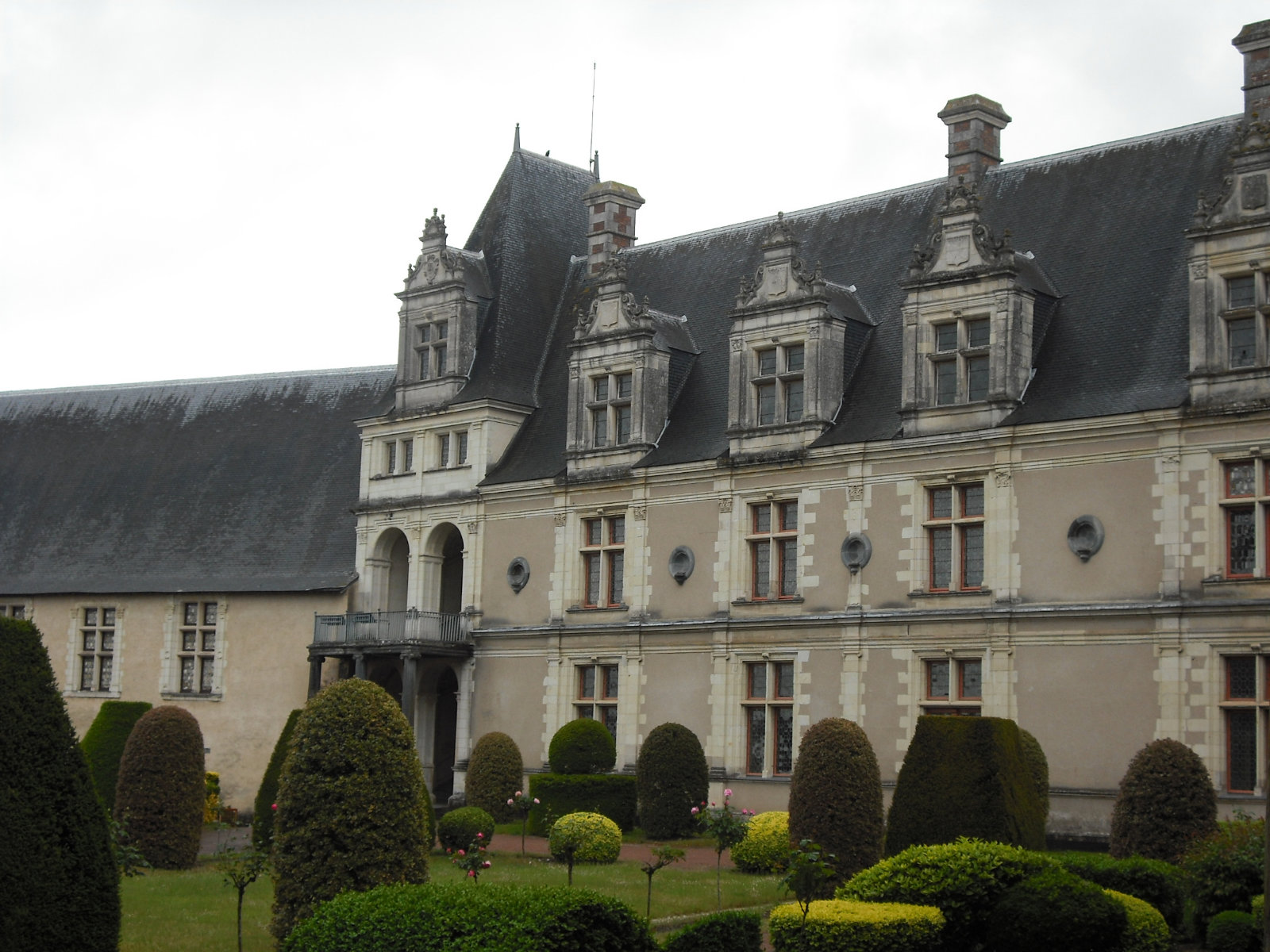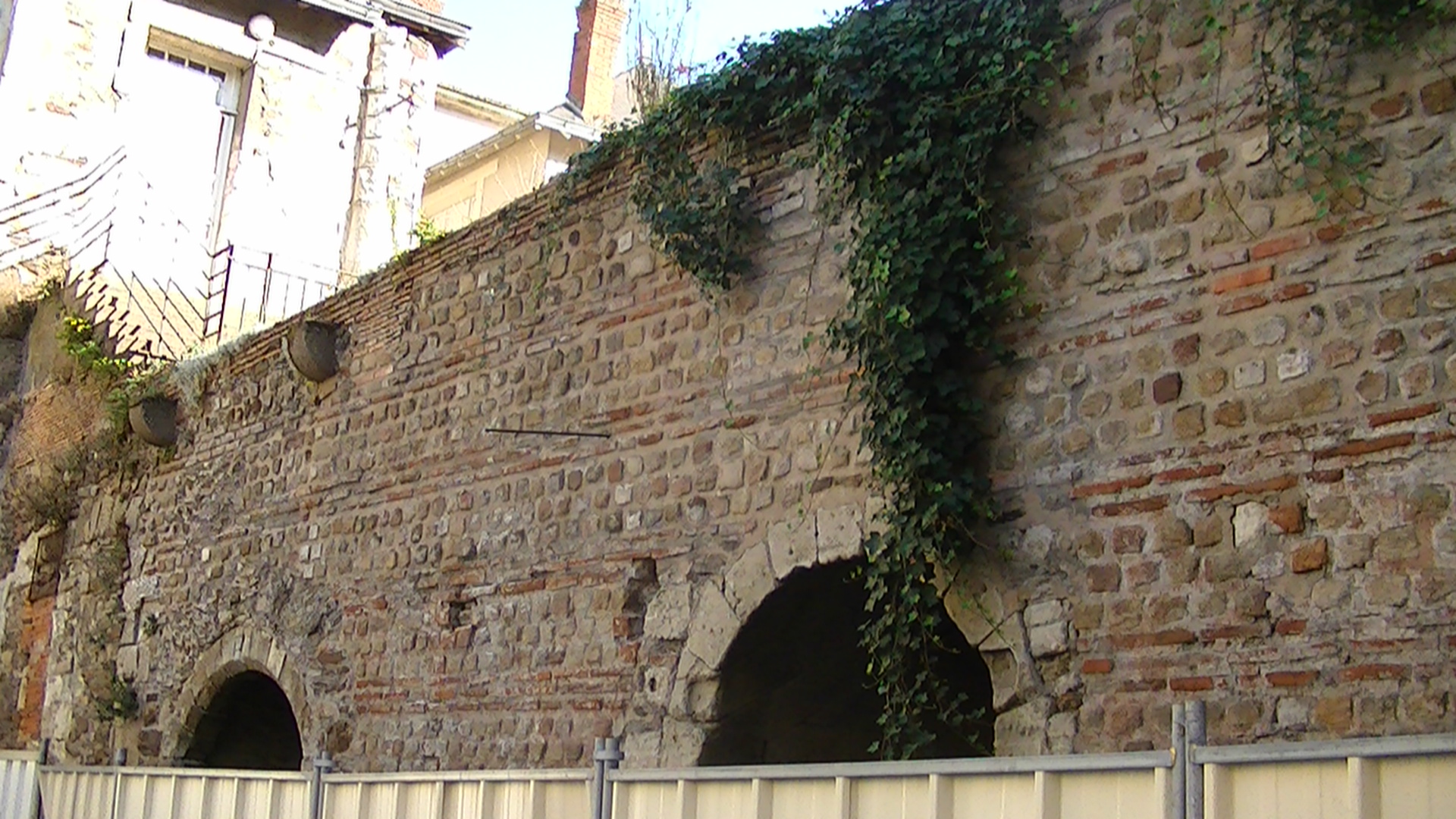|
Primaudière Priory
Primaudière Priory is an ancient priory dating from the 13th and 18th centuries, located in the French communes of Armaillé in Maine-et-Loire and Juigné-des-Moutiers in Loire-Atlantique (Pays de la Loire region). It was founded by monks of the Grandmontines, Grandmont order in 1207, with the help and support of local lords. It was abandoned by the last monks in 1762. The main building is the Primaudière Chapel, built in the 13th century and a place of pilgrimage in the Middle Ages. The organization of the priory is typical of Grandmont architecture, particularly in terms of the openings in the chapel and its two doors, one for the faithful and the second for the monks serving it. Location The priory was built above the river Nymphe. This watercourse once separated the Provinces of France, ancient provinces of Duchy of Anjou, Anjou and Duchy of Brittany, Bretagne. Today, it divides the departments of Maine-et-Loire and Loire-Atlantique. As a result, the monument is situated ... [...More Info...] [...Related Items...] OR: [Wikipedia] [Google] [Baidu] |
Monument Historique
() is a designation given to some national heritage sites in France. It may also refer to the state procedure in France by which national heritage protection is extended to a building, a specific part of a building, a collection of buildings, a garden, a bridge, or other structure, because of their importance to France's architectural and historical cultural heritage. Both public and privately owned structures may be listed in this way, as well as movable objects. there were 44,236 monuments listed. The term "classification" is reserved for designation performed by the French Ministry of Culture for a monument of national-level significance. Monuments of lesser significance may be "inscribed" by various regional entities. Buildings may be given the classification (or inscription) for either their exteriors or interiors. A monument's designation could be for a building's décor, its furniture, a single room, or even a staircase. An example is the classification of the déco ... [...More Info...] [...Related Items...] OR: [Wikipedia] [Google] [Baidu] |
Martigné-Ferchaud
Martigné-Ferchaud (; ; Gallo language, Gallo: ''Marteinyaé-Fèrchaud'') is a Communes of France, commune in the Ille-et-Vilaine Departments of France, department of Brittany (administrative region), Brittany in northwestern France. Etymology The name "Martigné" is thought to date from the Gallo-Roman period, the place being named after the first Roman governor of the area, known to have been named Martinus. The place-name was recorded in 1218 as Martigneum. The origin of the second part of the name is less clear. In French language, French ''fer chaud'' means hot iron, and the two most likely origins are the practice of shoeing horses with hot iron and the local iron working industry. Geography The town lies in the middle of the commune, on the left bank of the Semnon, River Semnon, which flows westwards through the commune. History In ancient times the town was part of the Riedones, one of the five Breton federations. Following the Roman invasion of 56 BC, it became part o ... [...More Info...] [...Related Items...] OR: [Wikipedia] [Google] [Baidu] |
Segré
Segré () is a former commune in the Maine-et-Loire department in western France. On 15 December 2016, it was merged into the new commune Segré-en-Anjou Bleu. 28 September 2016 There is a of the Maine-et-Loire department in Segré. Geography In the town of Segré, the flows into the Oudon.Twin towns * Fe ...[...More Info...] [...Related Items...] OR: [Wikipedia] [Google] [Baidu] |
Privilege (law)
A privilege is a certain entitlement to immunity from prosecution, immunity granted by the state or another authority to a restricted group, either by birth or on a conditional basis. Land-titles and taxi medallions are examples of transferable privilege – they can be revoked in certain circumstances. In modern democratic states, a ''privilege'' is conditional and granted only after birth. By contrast, a ''right'' is an inherent, irrevocable entitlement held by all citizens or all human beings from the moment of birth. Various examples of old common law privilege still exist – to title deeds, for example. Etymologically, a privilege (''privilegium'') means a "private law", or rule relating to a specific individual or institution. The principles of conduct that members of the legal profession observe in their practice are called legal ethics. Boniface's Fulda monastery, abbey of Fulda, to cite an early and prominent example, was granted ''privilege (canon law), privilegium' ... [...More Info...] [...Related Items...] OR: [Wikipedia] [Google] [Baidu] |
French Livre
The livre (abbreviation: Pound sign, £ or Livre tournois, ₶., French language, French for (pound)) was the currency of Kingdom of France and its predecessor states of Francia and West Francia from 781 to 1794. Several different livres existed, some concurrently. The livre was the name of coins and of units of account. History Origin and etymology The livre was established by Charlemagne as a unit of account equal to one Pound (mass), pound of silver. It was subdivided into 20 ''French sol, sous'' (also ''sols''), each sou equalling 12 ''French denier, deniers''. The word ''livre'' came from the Latin word ''Ancient Roman units of measurement#Weight, libra'', a Roman unit of weight and still the name of a Pound (mass), pound in modern French, and the denier comes from the Roman denarius. This system and the denier itself served as the model for many of Europe's currencies, including the British pound, Italian lira, Spanish dinero and the Portuguese dinheiro. This first l ... [...More Info...] [...Related Items...] OR: [Wikipedia] [Google] [Baidu] |
La Prévière
La Prévière () is a former commune in the Maine-et-Loire department in western France. On 15 December 2016, it was merged into the new commune Ombrée d'Anjou. 7 December 2016 Geography The river forms all of the commune's north-eastern border.See also *Communes of the Maine-et-Loire department
The following is a list of the 176 communes of the Maine-et-Loire department of France
France, officially the French Republic, ...
[...More Info...] [...Related Items...] OR: [Wikipedia] [Google] [Baidu] |
Châteaubriant
Châteaubriant (; ; Gallo language, Gallo: ''Châtiaoberiant'') is a town in western France, about southwest of Paris, and one of the three Subprefectures in France, sous-préfectures of the Loire-Atlantique departments of France, department. Châteaubriant is also situated in the historical and cultural region of Brittany, and it is the capital of the Pays de la Mée. A part of the traditional province of Brittany, Châteaubriant also lies on the threshold of County of Anjou, Anjou, and it was an important stronghold in northwestern France during the Middle Ages. The town appeared during the 11th century, around a castle and a priory. A fair, which still exists, was also founded in 1050. Châteaubriant played a certain role during the Mad War between France and Brittany and became a significant cultural centre in the 16th century, when the Renaissance château was built in the medieval fortress. The town is situated between Nantes and Rennes, and tends to be economically orien ... [...More Info...] [...Related Items...] OR: [Wikipedia] [Google] [Baidu] |
Nantes
Nantes (, ; ; or ; ) is a city in the Loire-Atlantique department of France on the Loire, from the Atlantic Ocean, Atlantic coast. The city is the List of communes in France with over 20,000 inhabitants, sixth largest in France, with a population of 320,732 in Nantes proper and a metropolitan area of nearly 1 million inhabitants (2020). With Saint-Nazaire, a seaport on the Loire estuary, Nantes forms one of the main north-western French metropolitan agglomerations. It is the administrative seat of the Loire-Atlantique Departments of France, department and the Pays de la Loire Regions of France, region, one of 18 regions of France. Nantes belongs historically and culturally to Brittany, a former Duchy of Brittany, duchy and Province of Brittany, province, and Reunification of Brittany, its omission from the modern administrative region of Brittany is controversial. Nantes was identified during classical antiquity as a port on the Loire. It was the seat of a bishopric at the ... [...More Info...] [...Related Items...] OR: [Wikipedia] [Google] [Baidu] |
Roman Catholic Diocese Of Nantes
The Diocese of Nantes (; ; ) is a Latin Church diocese of the Catholic Church in Nantes, France. The diocese consists of the department of Loire-Atlantique. It has existed since the 4th century. It is now suffragan of the Archdiocese of Rennes, Dol, and Saint-Malo, having previously been suffragan to the Archdiocese of Tours. The seat of the bishop is the Cathedral of S. Pierre in the city of Nantes. In 2021, in the Diocese of Nantes there was one priest for every 3,802 Catholics. History According to late traditions, Saint Clarus (Saint Clair), first Bishop of Nantes, was a disciple of Saint Peter. Arthur Le Moyne de La Borderie, however, has shown that the ritual of the Church of Nantes, drawn up by Helias the precentor in 1263, ignores the apostolic mission of Saint Clarus, and also that Saint Peter's nail in Nantes Cathedral was not brought there by Saint Clarus, but at a time subsequent to the invasions of the Northmen in the 10th century. He showed further that F ... [...More Info...] [...Related Items...] OR: [Wikipedia] [Google] [Baidu] |
Tithe
A tithe (; from Old English: ''teogoþa'' "tenth") is a one-tenth part of something, paid as a contribution to a religious organization or compulsory tax to government. Modern tithes are normally voluntary and paid in money, cash, cheques or via online giving, whereas historically tithes were required and paid in kind, such as agricultural produce. Church tax linked to the tax system are used in many countries to support their national church. Donations to the church beyond what is owed in the tithe, or by those attending a congregation who are not members or adherents, are known as offering (Christianity), offerings, and often are designated for specific purposes such as a building program, debt retirement, or mission work. Many Christian denominations hold Jesus in Christianity, Jesus taught that tithing must be done in conjunction with a deep concern for "justice, mercy and faithfulness" (cf. Matthew 23:23). Tithing was taught at early Christian Church Council, church counc ... [...More Info...] [...Related Items...] OR: [Wikipedia] [Google] [Baidu] |
Pouancé
Pouancé () is a former commune in the Maine-et-Loire department in western France. On 15 December 2016, it was merged into the new commune Ombrée d'Anjou. It is located on the border of 4 French departements: Maine-et-Loire, Mayenne in the north, Ille-et-Vilaine in the north-west, and Loire-Atlantique in the west. During the Middle Ages, Pouancé was situated on the border between Anjou, part of the Kingdom of France, and the independent duchy of Brittany. The city gained the nickname of "''Door of Anjou, March of Brittany''". The town retains its partially preserved city walls, some of its city gates and its medieval castle, which is the second largest in Anjou. History The menhir of Pierrefrite is one of the only remains from the prehistory in Pouancé region, along with some stone axes and an arrowhead. The menhir is located on the border of the commune of Armaillé et Saint-Michel-et-Chanveaux, and is made of red slate and stands 5 meters tall. After the discovery ... [...More Info...] [...Related Items...] OR: [Wikipedia] [Google] [Baidu] |




